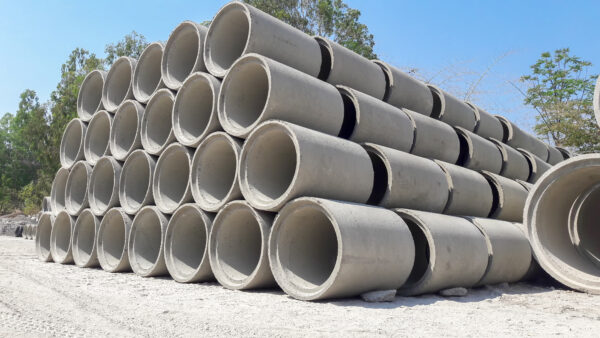Using the CLARENA® MC2000 Clay Mitigating Mid-Range Water Reducer – TB-1601

CLARENA® MC2000 is a patented polycarboxylate (PC) based ASTM C494 Type A and F mid-range water reducer that is formulated with proprietary chemicals to provide best in class performance when used in concrete mixes containing a wide range of clay bearing aggregates. CLARENA® MC2000’s robust dispersion capability in the presence of clay bearing aggregates results in consistent and predictable water reduction, excellent early and later age compressive strength, near neutral set times and superior finishability properties. CLARENA® MC2000 should be considered for use when moderate to high levels of clays are present in fine aggregates and laboratory and field test results confirm acceptable overall performance. CLARENA® MC2000 typical water reducer dosage rates range from 2-6 oz/cwt (130 to 391 mL/100 kg) and typical mid-range water reducer rates range from 7-15 oz/cwt (456 to 978 mL/100 kg).
Clay bearing fine aggregates, commonly found in the southwest region of the United States, can adversely affect the overall performance of primarily polcarboxylate based admixtures. Many clay minerals expand in the presence of water and can intercalate and absorb the polyalkylenes oxide component of PC based admixtures, thereby reducing cement dispersion and water reduction capabilities.This has recently become a more wide spread issue because several concrete industry trends have resulted in a decreased availability of high quality natural sands with growing dependence on typically higher clay content manufactured sands.
CLARENA® MC2000 is formulated with proprietary sacrificial agents that are absorbed and intercalate with clays before the PC component of the admixture. Therefore, CLARENA® MC2000 retains excellent, robust water reduction and other desirable properties at low dosage rates.
Extensive field testing using an array of commercially available cements, pozzolans and aggregates was conducted primarily in the Southwest region of the United States to evaluate overall CLARENA® MC2000 concrete performance. The first step of the field test protocol consisted of gathering and evaluating fine aggregates for clay content via a GCP modified methylene blue (MB) test procedure. This MB test procedure uses a colorimeter, which measures the absorbance of a given solution at specific light wavelengths. MB content is correlated to the light absorbed at a specific wavelength, thereby eliminating visual interpretation of the blue halo. A methylene blue value (MBV) is then calculated, with a higher MBV representing higher clay contents. Finally, MBV’s are used to calculate % of clay contents for a particular fine aggregate sample. Clay contents less than 0.4% can be considered to be relatively low, while clay contents greater than 0.8% can be considered to be relatively high. Figure 1 below details % of clay contents for several fine aggregates that are currently commercially available in the U.S. and were utilized during CLARENA® MC2000 field testing. Typically, when clay contents are greater than 0.4%, slump (dosage) efficiency and the overall performance of polycarboxylate based admixtures can be adversely affected. Note all five of the higher clay content fine aggregates came from the southwest region (Arizona, New Mexico).

Two examples of field test results depicting typical CLARENA® MC2000 field performance are shown below.
Field Test 1 Arizona (Urban Ready-Mix plant)
Nine 4 cubic yard batches of concrete were batched and tested. As detailed in Table 1, three chemically distinct Mid-Range Water Reducers (DARACEM® 55, MIRA® 95, CLARENA® MC2000) were tested in triplicate, with all plastic and hardened data represented by averages of the 3 tests. Mix design specifics included 456 pcy (271 kg/ m3)Type I/II cement, 124 pcy (74 kg/m3) Type F fly ash, 970 pcy (576 kg/m3) #1 coarse aggregate, 820 pcy (487 kg/m3) 3/8” coarse aggregate, 1320 pcy (783 kg/ m3) fine aggregate and 300 pcy (178 kg/m3) water.
The fine aggregate sampled prior to field testing had MBV value of 1.00 mg/g and 0.44% clay, which is considered to be moderate, but relatively low for the SW region.
Field test results revealed MIRA® 95 and CLARENA® MC2000 both performed well, compared to lignin based DARACEM® 55. Both MIRA® 95 and CLARENA® MC2000 had excellent slump (dosage) response, set time and 28 day compressive strengths properties. CLARENA® MC2000 had the best slump (dosage) response of the 3 admixtures tested.
Table 1 – Field Test 1 Test Data

Field Test 2 Arizona (Urban Ready-Mix plant)
Eight 4 cubic yard batches of concrete were batched and tested. As detailed in Table 2, three chemically distinct Mid-Range Water Reducers (DARACEM® 55, MIRA® 95, CLARENA® MC2000) were tested in duplicate, with all plastic and hardened data represented by averages of the 2 tests. Mix design specifics included 451 pcy (268 kg/m3) Type V cement, 113 pcy (67 kg/m3) Type F fly ash, 1800 pcy (1068 kg/m3) ASTM C-33 #1 coarse aggregate, 1310 pcy (777 kg/m3) fine aggregate and 290 pcy (172 kg/ m3) water.
The fine aggregate sampled prior to field testing had MBV value of 1.95 mg/g and 0.85% clay, which is considered to be high, but typical for the SW region.
Field test results revealed all the mixes tested had fair slump (dosage) response. However, CLARENA® MC2000 showed significantly better slump (dosage) response, compared to lignosulfonate based DARACEM® 55 and PC based MIRA® 95. Plastic air control, initial time of set and 28 day compressive strength were similar for all mixes tested.
Table 2 – Field Test 2 Test Data

In summary, field testing results showed CLARENA® MC2000’s robust dispersion capability in the presence of clay bearing aggregates resulted in consistent and predictable water reduction, excellent early and later age compressive strength, near neutral set times and superior finishability properties. CLARENA® MC2000 should be considered for use when moderate to high levels of clays are present in fine aggregates. It is always recommended laboratory and field testing be conducted to verify overall performance with specific sets of materials.





